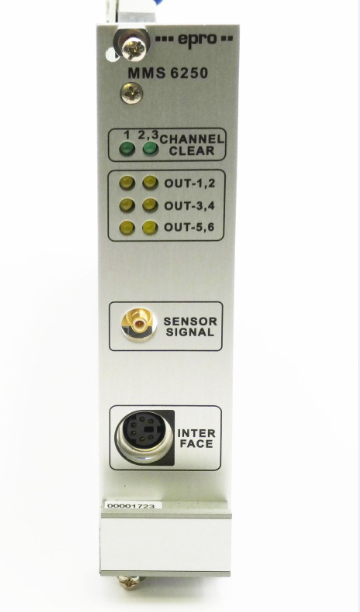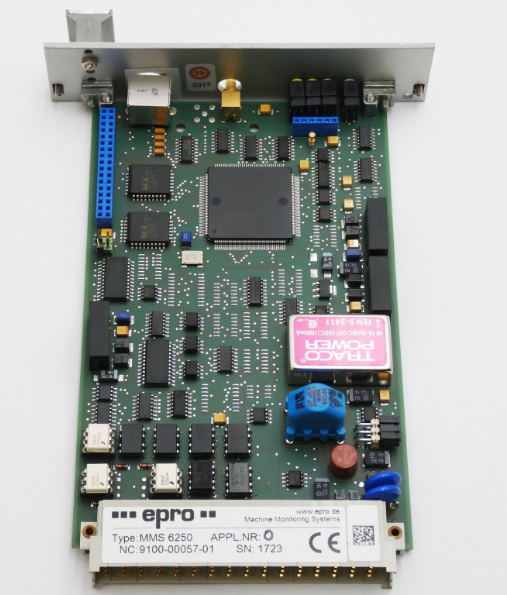EPRO MMS6250 Digital Axial Position Protection System
Description
| Manufacture | EPRO |
| Model | MMS6250 |
| Ordering information | MMS6250 |
| Catalog | MMS 6000 |
| Description | EPRO MMS6250 Digital Axial Position Protection System |
| Origin | Germany (DE) |
| HS Code | 85389091 |
| Dimension | 16cm*16cm*12cm |
| Weight | 0.8kg |
Details
Digital Axial Position Protection System
with PROFIBUS-DP Interface DAPS, DAPS AS, DAPS TS
● Microcontroller based 3-channel measuring system
● PROFIBUS-DP Interface (optional)
● High safety level due to password protection at each of the monitors
● Up to 6 limit values per channel
● Two current outputs per channel, one of them electrically isolated
● Analog comparison between the three channels
● Redundant supplies for monitors and backplane
● Self-test functions for electronic circuits and sensors
● Simplified fault detection by display messages in plaintext
● Electrical isolation of binary input and output signals
● RS 232 Interface for input of parameters
● RS 485 interface for data exchange with the host computer
● Hot swap of boards during operation Application:
The axial-position measuring and protection system DAPS, DAPS AS and DAPS TS serve the measure
ment and protection of inadmissible high axial displacements of the turbine shaft.
DAPS systems in combination with safety shut-off valves in power plants are suitable to replace older
mechanical position control and protection systems.
Due to the consistent triple chan
nel design, beginning with the signal acquisition up to the evaluation
of the measured shaft displacement, the operational safety and
also the protection function on a high level can be ensured.
Alarm outputs and error messages are output as potential-free
relay outputs and as short-circuit proof binary 24 V outputs.
Beside this the alarm outputs are also available as potential free relay
contacts in 2-out-of-3 logic.
The system includes an extended fault detection function. The three sensors are continuously checked on operating within the permitted limits.
Moreover, the channels mutually check and supervise the output
signals of each other. If the internal fault detection function detects an
error, this will be indicated via the output contacts and shown on the
display as plaintext.
By using prefabricated connection cables and screw terminals, the
systems may be integrated economically in 19“ cabinets.
















